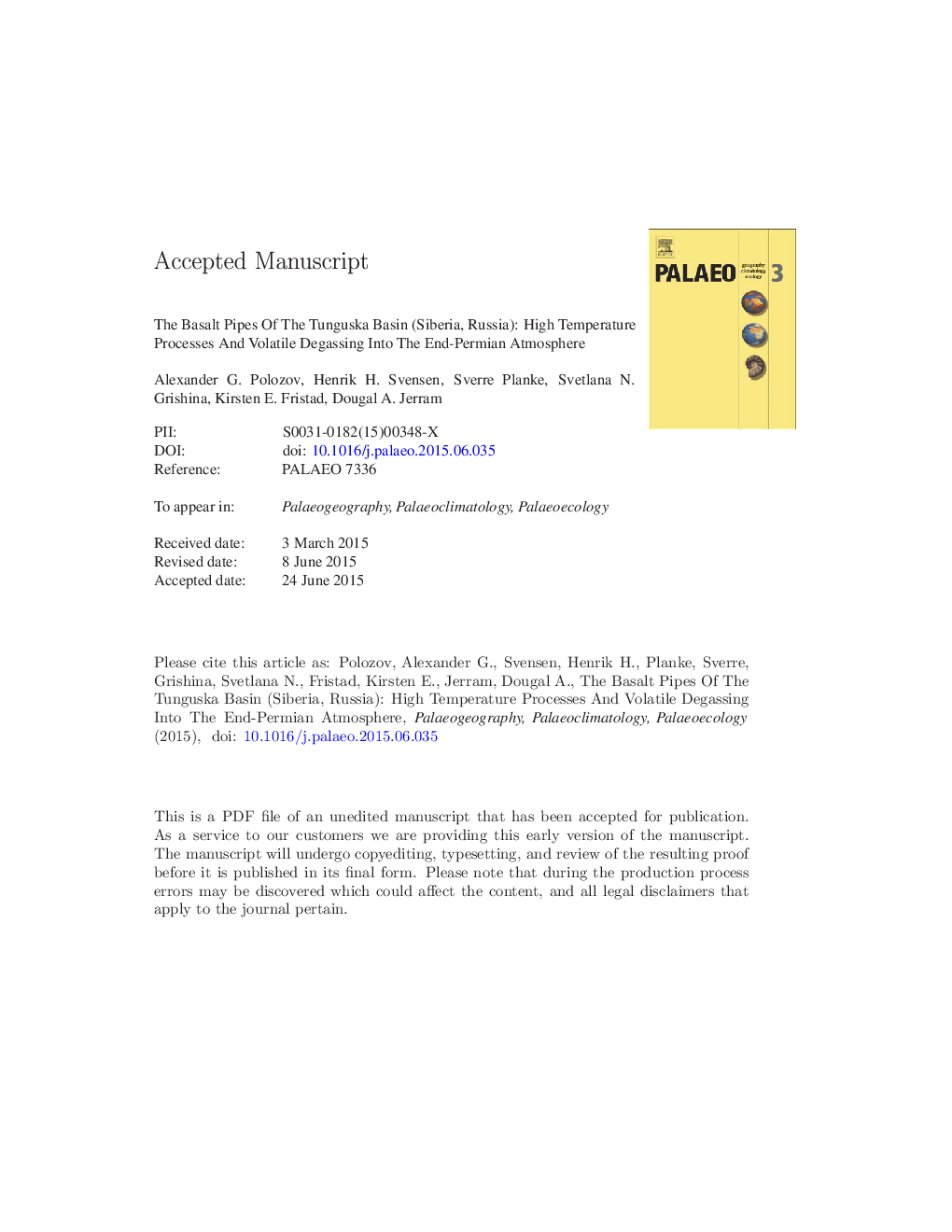| کد مقاله | کد نشریه | سال انتشار | مقاله انگلیسی | نسخه تمام متن |
|---|---|---|---|---|
| 6349266 | 1313953 | 2016 | 56 صفحه PDF | دانلود رایگان |
عنوان انگلیسی مقاله ISI
The basalt pipes of the Tunguska Basin (Siberia, Russia): High temperature processes and volatile degassing into the end-Permian atmosphere
دانلود مقاله + سفارش ترجمه
دانلود مقاله ISI انگلیسی
رایگان برای ایرانیان
موضوعات مرتبط
مهندسی و علوم پایه
علوم زمین و سیارات
فرآیندهای سطح زمین
پیش نمایش صفحه اول مقاله

چکیده انگلیسی
A number of mechanisms have been proposed to explain the end-Permian crisis. Many of them explore the link between this catastrophe and the Siberian Traps. We test the hypothesis that eruption of thermogenic gas generated in contact aureoles around igneous sills intruded into evaporite sequences of the Tunguska Basin triggered the crisis. In particular, we test the idea that the aspect that breccia pipes represent conduits for voluminous gas migration from the deep basins to the atmosphere. This contribution sheds new light on the pipe formation based on new field and borehole observations and electron microscopy analyses. Of more than three hundred mapped magnetite-bearing basalt pipes, 43 are classified as diatremes. The diatremes are usually circular or elliptical, with multiple zones of brecciation reaching the surface, sometimes with preserved in-filled crater lakes. The pipe diameter on the surface varies from a few tens of meters for small single diatremes to about a kilometer. The largest crater lake area is 2.7 km2. We have conducted a detailed study of the breccias in the Sholokhovsk basalt pipe located within the Nepa potash deposit in the Tunguska Basin, Siberia, Russia (about N 59° and E 107°) and find that the breccias are cemented by carbonate matrix (calcite, dolomite) and halite. Breccia clasts are altered at various temperatures, evidenced by growth of albite and garnet from basaltic glass, and diopside, garnet, magnetite and chlorine-bearing amphibole (up to 1.8% Cl) in altered magmatic clasts. These mineral assemblages suggest high temperature interactions with evaporites within the pipe conduits. The large number of pipes support that degassing of halogen-rich volatiles was a widespread and violent process with implications for the end-Permian crisis.
ناشر
Database: Elsevier - ScienceDirect (ساینس دایرکت)
Journal: Palaeogeography, Palaeoclimatology, Palaeoecology - Volume 441, Part 1, 1 January 2016, Pages 51-64
Journal: Palaeogeography, Palaeoclimatology, Palaeoecology - Volume 441, Part 1, 1 January 2016, Pages 51-64
نویسندگان
Alexander G. Polozov, Henrik H. Svensen, Sverre Planke, Svetlana N. Grishina, Kirsten E. Fristad, Dougal A. Jerram,